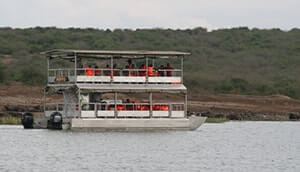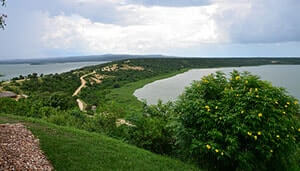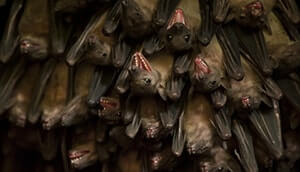Lake Edward in Uganda – Information and Facts
Lake Edward Uganda is the tiniest of the African Great Rift Lakes, situated on the border between Uganda and the Democratic Republic of Congo. The lake’s northern shore is just few miles south of the equator.
The first European to see the lake was Henry Morton Stanley, a Welsh explorer. He visited the lake in 1888 during the Relief Expedition of Emin Pasha. Stanley first believed the lake was part of Lake Albert and named it, Beatrice Gulf. He afterwards comprehended that it was a different lake and baptized it after Prince Albert Edward, the then Prince of Wales and son of Queen Victoria and later on became Edward VII.
In 1973, Uganda and Zaire renamed the lake Idi Amin Dada after former president, Idi Amin. The lake later recovered its original name, Lake Edward following Amin’s overthrow in 1079. Lake Edward and Lake George are the two water bodies enjoined by Kazinga Channel, a 40-km water stream that runs through Queen Elizabeth National Park. Kazinga channel is famous for its boat cruise safaris by tourists who free the park for wildlife tours.
The Geography of Lake Edward
This lake is located on the Albertine Rift, the Western Division of the East African Rift and is the fifteenth biggest lake on the African continent. It is adjoined on the West by the high Rwenzori Mountains, less precipitous grounds with undulating hills on the East, bordered by low-lying valley grasslands and swampland on the South, in Rwindi valleys, Rutshuru and Ishasha Rivers.
Edward is sited among two Eco regions and on the north-western fragment; one can see the rich montane woodlands of the Albertine Rift. This area is well-known for many widespread types such the mountain gorillas. The eastern precinct is typically pigeonholed by rolling hills, forests and plains. Some of the main uplands of the Victoria Basin are also found here.
The lake has got two national reserves on its shores, that is, the Virunga National Park is in the Democratic Republic of Congo, comprising of the North-Western shores of the lake, the Semuliki Valley and the low valley grasslands and marshlands of Rutshuru, Rwindi and Ishasha rivers. The lake’s North-Eastern shores boarder Queen Elizabeth National Park, a tourist attraction in Uganda recognized for its biological importance. Kigezi Game Reserve is placed on the South-Eastern shorelines of Lake Edward.
Volcanism
In the period of the past 500 years, several volcanic activities were recorded in the region. The two vital volcanic arenas, the Katwe-Kikorongo and the Bunyaruguru Volcanic Fields are close to a 32 kilometre long Kazinga Channel on the North-Western margin of the lake, with wide-ranging conduits and craters. On the lake’s Western shores, the Great Rift Valley is elevated at about 2000 meters above its shoreline. The Eastern and Southern shores are mostly conquered by flat lava grasslands.
Lake Edward and Lake George which neighbor each other were alleged to have been one larger lake in the past, but the lava that flowed from the nearby fields; the Nyamuragira and Maya-ya-Moto volcanoes flowed in and divided the two, leaving Kazinga Channel connecting the two.
Katwe-Kikorongo field is characterized by mainly craters and cones between Lake Edward and Lake George as well as being a home to seven crater lakes. The largest of the seven is Lake Katwe, which is 2.5 kilometres long and positioned 300 meters from Lake Edward. Lake Katwe has a depth of 100 meters. The Bunyaruguru field has close to 30 crater lakes, some of which are bigger than Lake Katwe.
The Lake’s Water (Hydrology)
The lake has got dozens of tributaries like the Ishasha, Rutshuru, Nyamugasani, Ntungwe and Rwindi rivers. Of these, the most significant is Rutshuru River, well-thought-out of being the Western stream of River Nile. The lake’s major outflow is the Semuliki River that begins near Ishango in Congo in the North-West, strolls to the North, flanked by the Rwenzori Mountains. Via this river, the lake is linked to River Nile water system. Lake George which is on the North-Eastern side of Lake Edward flows into it (Edward) through Kazinga Channel.
People Settlements and Ecology
Lake Edward is a home to lots of fish and therefore fishing is a vital activity for local residents. The water’s edge has got diverse animals like elephants, crocodiles, lions, buffaloes and hippopotamuses can be seen. The lake and its environs are also home to various perennial and wandering birds.
The lake shores have got no larger human settlements with the exception of Ishango in the North and section of the DR Congo. Vitshumbi, in Congo plus Mweya and Katwe on the Ugandan side are the smaller towns on the shoreline.
See Related Attractions in Queen Elizabeth National Park
 Kazinga Channel is a 32-kilometre long water channel that connects Lake George in the east to Lake Edward in the west. The channel is among the most paramount geographical features in Queen Elizabeth National Park with a magnificent view of the most vital wildlife in the park.
Kazinga Channel is a 32-kilometre long water channel that connects Lake George in the east to Lake Edward in the west. The channel is among the most paramount geographical features in Queen Elizabeth National Park with a magnificent view of the most vital wildlife in the park.
Kyambura Gorge – The Home Chimps  Kyambura Gorge is found in the far eastern side of Queen Elizabeth National Park in south western Uganda is roughly 1 km across and about 100 meters deeper. The gorge also known as the ‘Valley of Apes’ is drained by River Kyambura. Its a habitat to chimpanzees, other primate species and birds as well.
Kyambura Gorge is found in the far eastern side of Queen Elizabeth National Park in south western Uganda is roughly 1 km across and about 100 meters deeper. The gorge also known as the ‘Valley of Apes’ is drained by River Kyambura. Its a habitat to chimpanzees, other primate species and birds as well.
Ishasha Sector  The Ishasha Sector found in the Southern part of Queen Elizabeth National Park is well-known for the amazing Tree-Climbing lions. Lions that hang in the big fig trees are an exceptional attraction and a key highlight of any Uganda safari tour this large national park. The Ishasha lions relax in the tree branches as they also spy on their preys from above.
The Ishasha Sector found in the Southern part of Queen Elizabeth National Park is well-known for the amazing Tree-Climbing lions. Lions that hang in the big fig trees are an exceptional attraction and a key highlight of any Uganda safari tour this large national park. The Ishasha lions relax in the tree branches as they also spy on their preys from above.
Kasenyi Plains  Kasenyi Plains are part of Queen Elizabeth National Park. It is at these plains that the biggest percentage of game drive Uganda Safaris are carried out from. The plains are found on the western shores of the spectacular Lake George adjoining to the Kazinga Channel onto which the water makes a convergence.
Kasenyi Plains are part of Queen Elizabeth National Park. It is at these plains that the biggest percentage of game drive Uganda Safaris are carried out from. The plains are found on the western shores of the spectacular Lake George adjoining to the Kazinga Channel onto which the water makes a convergence.
Mweya Peninsula  Mweya Peninsula is found within Queen Elizabeth National Park on the northeastern shores of Lake Edward. The peninsula is the corner point where Kazinga Channel joins the lake. This beautiful piece of land surrounded by water either sides is approximately 66 kilometres by road from Kasese town.
Mweya Peninsula is found within Queen Elizabeth National Park on the northeastern shores of Lake Edward. The peninsula is the corner point where Kazinga Channel joins the lake. This beautiful piece of land surrounded by water either sides is approximately 66 kilometres by road from Kasese town.
Lake George  Lake George found in western Uganda covers 250 square kilometres. The lake with an estimated depth of 2.4 meters is part of Africa’s Great Lakes system. Though the lake itself is not considered a Great Lake. This water body was named after a British Prince, George who later became King George V.
Lake George found in western Uganda covers 250 square kilometres. The lake with an estimated depth of 2.4 meters is part of Africa’s Great Lakes system. Though the lake itself is not considered a Great Lake. This water body was named after a British Prince, George who later became King George V.
Maramagambo Forest  Maramagambo Forest is found in Bushenyi district and is a part of Queen Elizabeth National Park. The forest is prominently associated with the Bat Cave and the Python. The forest is bounded by two crater lakes, Lake Nyamasingiri and Lake Kyasanduka and is a home to the red-tailed monkeys, chimps and Bates’ pygmy antelope (Neotragus batesi) among others.
Maramagambo Forest is found in Bushenyi district and is a part of Queen Elizabeth National Park. The forest is prominently associated with the Bat Cave and the Python. The forest is bounded by two crater lakes, Lake Nyamasingiri and Lake Kyasanduka and is a home to the red-tailed monkeys, chimps and Bates’ pygmy antelope (Neotragus batesi) among others.
